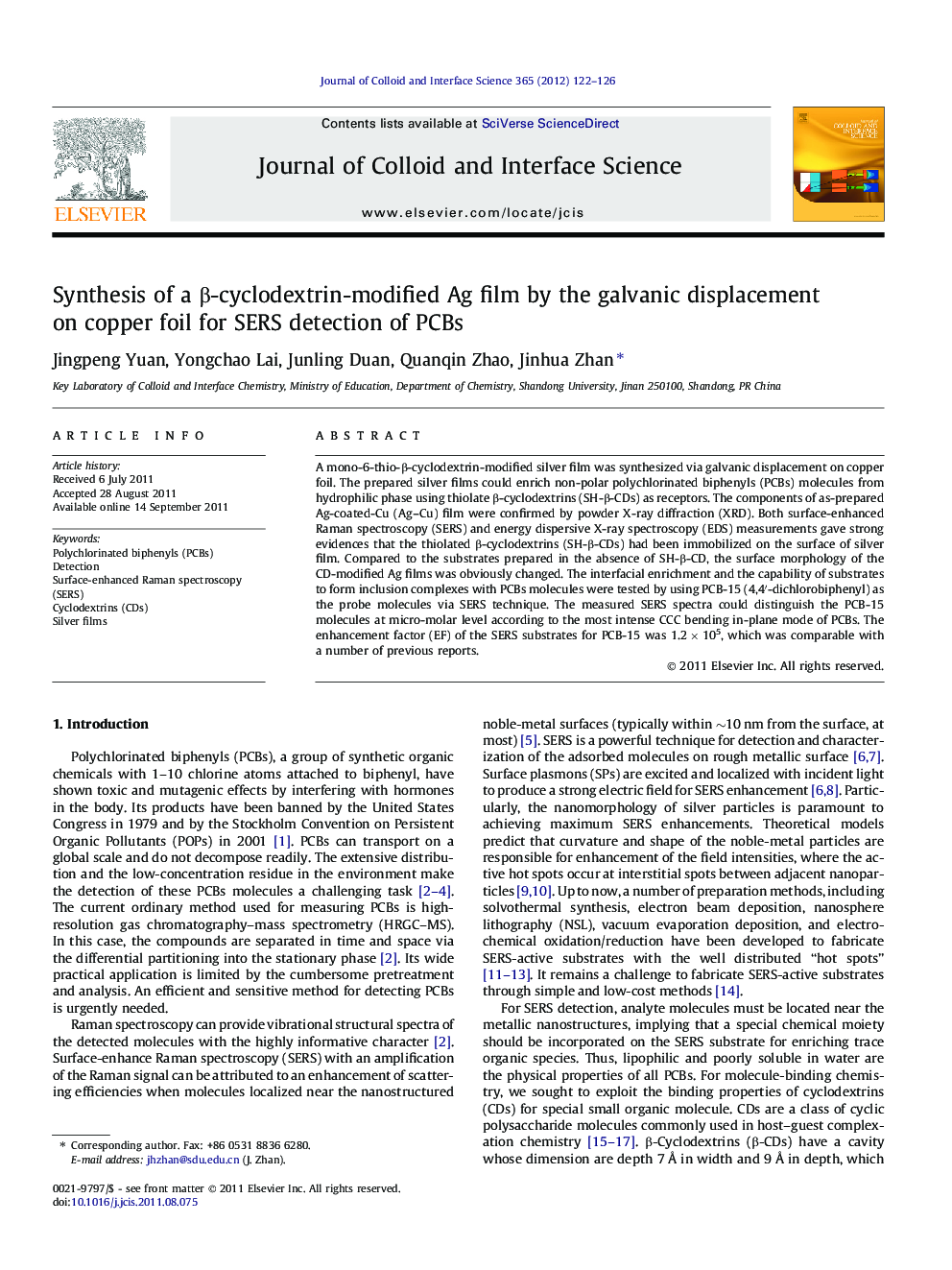| Article ID | Journal | Published Year | Pages | File Type |
|---|---|---|---|---|
| 608458 | Journal of Colloid and Interface Science | 2012 | 5 Pages |
A mono-6-thio-β-cyclodextrin-modified silver film was synthesized via galvanic displacement on copper foil. The prepared silver films could enrich non-polar polychlorinated biphenyls (PCBs) molecules from hydrophilic phase using thiolate β-cyclodextrins (SH-β-CDs) as receptors. The components of as-prepared Ag-coated-Cu (Ag–Cu) film were confirmed by powder X-ray diffraction (XRD). Both surface-enhanced Raman spectroscopy (SERS) and energy dispersive X-ray spectroscopy (EDS) measurements gave strong evidences that the thiolated β-cyclodextrins (SH-β-CDs) had been immobilized on the surface of silver film. Compared to the substrates prepared in the absence of SH-β-CD, the surface morphology of the CD-modified Ag films was obviously changed. The interfacial enrichment and the capability of substrates to form inclusion complexes with PCBs molecules were tested by using PCB-15 (4,4′-dichlorobiphenyl) as the probe molecules via SERS technique. The measured SERS spectra could distinguish the PCB-15 molecules at micro-molar level according to the most intense CCC bending in-plane mode of PCBs. The enhancement factor (EF) of the SERS substrates for PCB-15 was 1.2 × 105, which was comparable with a number of previous reports.
Graphical abstractβ-Cyclodextrin-modified Ag film (β-CD-Ag) was synthesized through one-pot step and used as SERS-active substrate, which exhibited effective sensitivity for PCBs detection at low concentration.Figure optionsDownload full-size imageDownload high-quality image (123 K)Download as PowerPoint slideHighlights► The SERS-active substrate was synthesized with the assistance of β-cyclodextrin. ► The characterization confirmed β-cyclodextrin was immobilized on the substrate. ► The substrate effectively enriched low concentration polychlorinated biphenyls. ► The SERS substrates have high enhancement factor for detecting PCBs.
